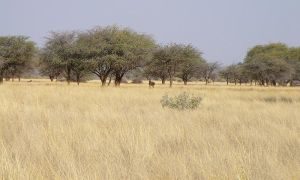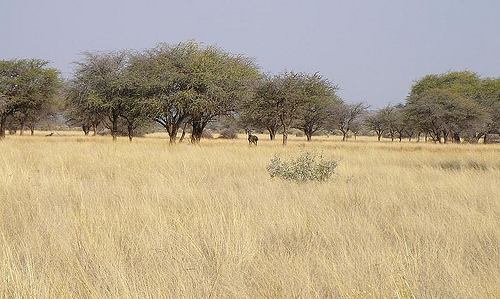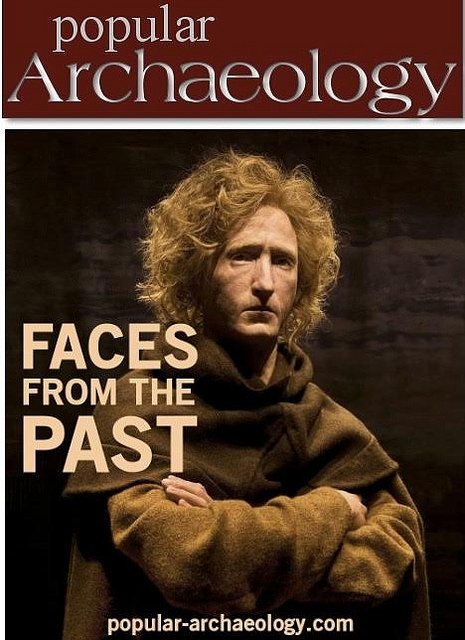
Hominins (humans and their ancestors, and chimps and gorillas) expanded their diets as early as 3.76 million years ago to include foods based on plants that use the C4 photosynthetic pathway, a change that may have allowed them to survive in a wider range of environments than their ancestors, a study reports. Naomi Levin and colleagues used carbon isotope data from 152 fossil teeth of early humans, monkeys, and mammals in Ethiopia to refine the timing of the dietary expansion of early humans and the baboon, Theropithecus oswaldi. The dietary transition from foods based on plants that use the C3 photosynthetic pathway, which includes trees, shrubs, and cool season grasses, to those from plants that use the C4 or CAM pathways, such as warm season grasses and succulents, indicates a shift toward foods found in open landscapes. The authors found that C4 foods were a significant component of hominin and Theropithecus diets as early as 3.76 million years ago, during the early Pliocene. This dietary expansion occurred after major changes in teeth and jaw morphology in hominins, or early humans, whereas in the earliest members of the T. oswaldi lineage this dietary change preceded dental specialization for grazing. The study results have implications for early human evolution and dispersal, as the ability of early Pliocene hominins to eat a range of C3 and C4 foods may have enabled them to become generalists who could thrive in a wide variety of environments, the authors suggest.
____________________________________________
The African savannah, which consists of mostly C4 type plants. Wikimedia Commons
___________________________________________
The details of the study* are published in the Proceedings of the National Academy of Science
_________________________________________________________
*“Dietary change among hominins and cercopithecids in Ethiopia during the early Pliocene,” by Naomi E. Levin et al.
This article was adapted and edited from the subject PNAS press release.
_________________________________________________________
In addition, the latest Popular Archaeology ebook is now available.
______________________________________________
Travel and learn with Far Horizons.
____________________________________________
 This richly illustrated ebook version of a recent Popular Archaeology issue includes the following stories: The discovery of the tomb of a previously unknown pharaoh that is shedding light on a lost ancient Egyptian dynasty; how genetics is revolutionizing what we know about human evolution and our prehistoric past; one scholar’s controversial ‘New Chronology’ and how it supports the historicity of the biblical Exodus; how archaeologists are unearthing new history in Williamsburg, Virginia, a seat of British colonial power in 18th century America; the discovery of the remains of a major Roman legionary base in Israel; the unearthing of an ancient Judean fortified settlement in the borderlands between the biblical kingdoms of ancient Judah and the Philistines; and how archaeologists are uncovering evidence of what may have been an important administrative center of Judah during the 8th century BCE. Now available from Amazon.com!
This richly illustrated ebook version of a recent Popular Archaeology issue includes the following stories: The discovery of the tomb of a previously unknown pharaoh that is shedding light on a lost ancient Egyptian dynasty; how genetics is revolutionizing what we know about human evolution and our prehistoric past; one scholar’s controversial ‘New Chronology’ and how it supports the historicity of the biblical Exodus; how archaeologists are unearthing new history in Williamsburg, Virginia, a seat of British colonial power in 18th century America; the discovery of the remains of a major Roman legionary base in Israel; the unearthing of an ancient Judean fortified settlement in the borderlands between the biblical kingdoms of ancient Judah and the Philistines; and how archaeologists are uncovering evidence of what may have been an important administrative center of Judah during the 8th century BCE. Now available from Amazon.com!
____________________________________________









